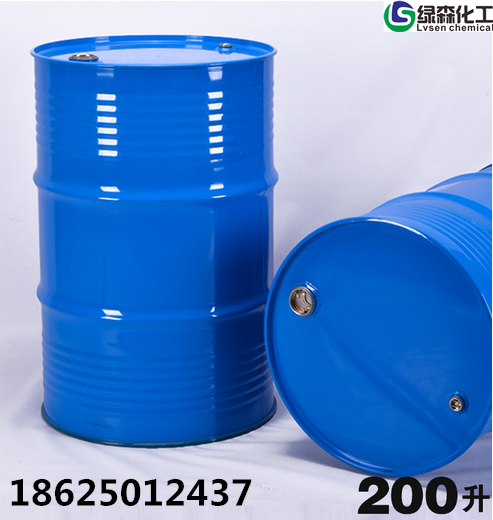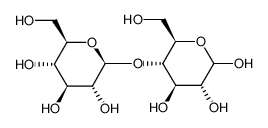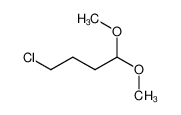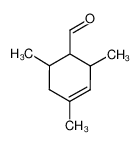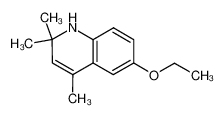| Product name | diacetone alcohol |
|---|
| Product number | - |
|---|---|
| Other names | 4-hydroxy-4-methylpentan-2-one |
| Identified uses | For industry use only. Food additives -> Flavoring Agents |
|---|---|
| Uses advised against | no data available |
| Company | MOLBASE (Shanghai) Biotechnology Co., Ltd. |
|---|---|
| Address | Floor 4 & 5, Building 12, No. 1001 North Qinzhou Road, Xuhui District, Shanghai, China |
| Telephone | +86(21)64956998 |
| Fax | +86(21)54365166 |
| Emergency phone number | +86-400-6021-666 |
|---|---|
| Service hours | Monday to Friday, 9am-5pm (Standard time zone: UTC/GMT +8 hours). |
Eye irritation, Category 2
2.2 GHS label elements, including precautionary statements| Pictogram(s) |  |
|---|---|
| Signal word | Warning |
| Hazard statement(s) | H319 Causes serious eye irritation |
| Precautionary statement(s) | |
| Prevention | P264 Wash ... thoroughly after handling. P280 Wear protective gloves/protective clothing/eye protection/face protection. |
| Response | P305+P351+P338 IF IN EYES: Rinse cautiously with water for several minutes. Remove contact lenses, if present and easy to do. Continue rinsing. P337+P313 If eye irritation persists: Get medical advice/attention. |
| Storage | none |
| Disposal | none |
none
3.Composition/information on ingredients 3.1 Substances| Chemical name | Common names and synonyms | CAS number | EC number | Concentration |
|---|---|---|---|---|
| diacetone alcohol | diacetone alcohol | 123-42-2 | none | 100% |
Consult a physician. Show this safety data sheet to the doctor in attendance.
If inhaledFresh air, rest.
In case of skin contactRemove contaminated clothes. Rinse and then wash skin with water and soap.
In case of eye contactFirst rinse with plenty of water for several minutes (remove contact lenses if easily possible), then refer for medical attention.
If swallowedRinse mouth. Do NOT induce vomiting. Give one or two glasses of water to drink. Refer for medical attention .
4.2 Most important symptoms/effects, acute and delayedVapor is irritating to the mucous membrane of the eye and respiratory tract. Inhalation can cause dizziness, nausea, some anesthesia. Very high concentrations have a narcotic effect. The liquid is not highly irritating to the skin but can cause dermatitis. (USCG, 1999)
4.3 Indication of immediate medical attention and special treatment needed, if necessary Absorption, Distribution and ExcretionABSORPTION ... OCCURS READILY FROM THE LUNG.
5.Fire-fighting measures 5.1 Extinguishing media Suitable extinguishing mediaALCOHOL FOAM, FOAM, CARBON DIOXIDE, DRY CHEMICAL ... .
5.2 Specific hazards arising from the chemicalExcerpt from ERG Guide 129 [Flammable Liquids (Water-Miscible / Noxious)]: HIGHLY FLAMMABLE: Will be easily ignited by heat, sparks or flames. Vapors may form explosive mixtures with air. Vapors may travel to source of ignition and flash back. Most vapors are heavier than air. They will spread along ground and collect in low or confined areas (sewers, basements, tanks). Vapor explosion hazard indoors, outdoors or in sewers. Those substances designated with a (P) may polymerize explosively when heated or involved in a fire. Runoff to sewer may create fire or explosion hazard. Containers may explode when heated. Many liquids are lighter than water. (ERG, 2016)
5.3 Special protective actions for fire-fightersWear self-contained breathing apparatus for firefighting if necessary.
6.Accidental release measures 6.1 Personal precautions, protective equipment and emergency proceduresUse personal protective equipment. Avoid dust formation. Avoid breathing vapours, mist or gas. Ensure adequate ventilation. Evacuate personnel to safe areas. Avoid breathing dust. For personal protection see section 8.
6.2 Environmental precautionsRemove all ignition sources. Personal protection: filter respirator for organic gases and vapours adapted to the airborne concentration of the substance. Cover the spilled material with inert absorbent. Carefully collect remainder.
6.3 Methods and materials for containment and cleaning upPick up and arrange disposal. Sweep up and shovel. Keep in suitable, closed containers for disposal.
7.Handling and storage 7.1 Precautions for safe handlingAvoid contact with skin and eyes. Avoid formation of dust and aerosols. Avoid exposure - obtain special instructions before use.Provide appropriate exhaust ventilation at places where dust is formed. For precautions see section 2.2.
7.2 Conditions for safe storage, including any incompatibilitiesFireproof. Separated from acids, bases, amines and oxidants.... MATERIALS WHICH ARE TOXIC AS STORED OR WHICH CAN DECOMPOSE INTO TOXIC COMPONENTS ... SHOULD BE STORED IN A COOL WELL-VENTILATED PLACE, OUT OF THE DIRECT RAYS OF THE SUN, AWAY FROM AREAS OF HIGH FIRE HAZARD, AND SHOULD BE PERIODICALLY INSPECTED ... INCOMPATIBLE MATERIALS SHOULD BE ISOLATED ... .
8.Exposure controls/personal protection 8.1 Control parameters Occupational Exposure limit valuesRecommended Exposure Limit: 10 Hr Time-Weighted Avg: 50 ppm (240 mg/cu m).
Biological limit valuesno data available
8.2 Appropriate engineering controlsHandle in accordance with good industrial hygiene and safety practice. Wash hands before breaks and at the end of workday.
8.3 Individual protection measures, such as personal protective equipment (PPE) Eye/face protectionSafety glasses with side-shields conforming to EN166. Use equipment for eye protection tested and approved under appropriate government standards such as NIOSH (US) or EN 166(EU).
Skin protectionWear impervious clothing. The type of protective equipment must be selected according to the concentration and amount of the dangerous substance at the specific workplace. Handle with gloves. Gloves must be inspected prior to use. Use proper glove removal technique(without touching glove's outer surface) to avoid skin contact with this product. Dispose of contaminated gloves after use in accordance with applicable laws and good laboratory practices. Wash and dry hands. The selected protective gloves have to satisfy the specifications of EU Directive 89/686/EEC and the standard EN 374 derived from it.
Respiratory protectionWear dust mask when handling large quantities.
Thermal hazardsno data available
9.Physical and chemical properties| Physical state | Clear, colorless liquid |
|---|---|
| Colour | COLORLESS LIQUID |
| Odour | FAINT PLEASANT ODOR |
| Melting point/ freezing point | -44°C(lit.) |
| Boiling point or initial boiling point and boiling range | 166°C(lit.) |
| Flammability | Class II Combustible Liquid: Fl.P. at or above 37.78°C and below 60°C.Flammable. See Notes. |
| Lower and upper explosion limit / flammability limit | 1.8% LOWER & 6.9% UPPER |
| Flash point | 58°C |
| Auto-ignition temperature | 603.33°C (USCG, 1999) |
| Decomposition temperature | no data available |
| pH | no data available |
| Kinematic viscosity | no data available |
| Solubility | In water:MISCIBLE |
| Partition coefficient n-octanol/water (log value) | log Kow= -0.098 (est) |
| Vapour pressure | <1 mm Hg ( 20 °C) |
| Density and/or relative density | 0.931g/mLat 25°C(lit.) |
| Relative vapour density | 4 (vs air) |
| Particle characteristics | no data available |
no data available
10.2 Chemical stabilityDECOMPOSED BY PROLONGED EXPOSURE TO ALKALIS & BY DISTILLATION AT ATMOSPHERIC PRESSURE
10.3 Possibility of hazardous reactionsMODERATE WHEN EXPOSED TO HEAT OR FLAME ...Acetyl bromide reacts violently with alcohols or water, [Merck 11th ed., 1989]. Mixtures of alcohols with concentrated sulfuric acid and strong hydrogen peroxide can cause explosions. Example: An explosion will occur if dimethylbenzylcarbinol is added to 90% hydrogen peroxide then acidified with concentrated sulfuric acid. Mixtures of ethyl alcohol with concentrated hydrogen peroxide form powerful explosives. Mixtures of hydrogen peroxide and 1-phenyl-2-methyl propyl alcohol tend to explode if acidified with 70% sulfuric acid, [Chem. Eng. News 45(43):73(1967); J, Org. Chem. 28:1893(1963)]. Alkyl hypochlorites are violently explosive. They are readily obtained by reacting hypochlorous acid and alcohols either in aqueous solution or mixed aqueous-carbon tetrachloride solutions. Chlorine plus alcohols would similarly yield alkyl hypochlorites. They decompose in the cold and explode on exposure to sunlight or heat. Tertiary hypochlorites are less unstable than secondary or primary hypochlorites, [NFPA 491 M, 1991]. Base-catalysed reactions of isocyanates with alcohols should be carried out in inert solvents. Such reactions in the absence of solvents often occur with explosive violence, [Wischmeyer(1969)].
10.4 Conditions to avoidno data available
10.5 Incompatible materialsStrong oxidizers, strong alkalis.
10.6 Hazardous decomposition productsWhen heated to decomp it emits acrid smoke and fumes.
11.Toxicological information Acute toxicity- Oral: LD50 Rat oral 4.0 g/kg
- Inhalation: no data available
- Dermal: no data available
no data available
Serious eye damage/irritationno data available
Respiratory or skin sensitizationno data available
Germ cell mutagenicityno data available
Carcinogenicityno data available
Reproductive toxicityno data available
STOT-single exposureno data available
STOT-repeated exposureno data available
Aspiration hazardno data available
12.Ecological information 12.1 Toxicity- Toxicity to fish: LC50 Lepomis macrochirus 420 ppm/96 hr (static bioassay in fresh water at 23°C, mild aeration applied after 24 hr).
- Toxicity to daphnia and other aquatic invertebrates: no data available
- Toxicity to algae: no data available
- Toxicity to microorganisms: no data available
Two sets of tests using acclimated mixed microbial cultures as inoculum gave percent theoretical BOD of 47%(1) and 46%(2) after 5 days for 4-hydroxy-4-methyl-2-pentanone under aerobic conditions(1,2). A percent theoretical BOD of 3% was observed after 5 days in screening tests using the standard dilution technique under aerobic conditions and effluent sewage from a biological sanitary waste treatment plant as inoculum; 31% theoretical BOD was observed after 5 days using adapted effluent sewage(3). No information regarding biodegradation in natural media was found(SRC).
12.3 Bioaccumulative potentialAn estimated BCF of 0.50 can be calculated(SRC) from an estimated log Kow of -0.098(2) using a recommended regression equation(1). Based upon the estimated BCF and the reported infinite solubility of the compound in water(3), 4-hydroxy-4-methyl-2-pentanone will not be expected to significantly bioconcentrate in aquatic organisms(SRC).
12.4 Mobility in soilAn estimated Koc of 21 can be calculated(SRC) from an estimated log Kow of -0.098(2) using a recommended regression equation(1). Based upon the estimated Koc and the reported infinite solubility of the compound in water(3), 4-hydroxy-4-methyl-2-pentanone will not be expected to strongly adsorb to sediment or suspended particulate matter(4,SRC). It will be expected to exhibit very high mobility in soil(4), and therefore, 4-hydroxy-4-methyl-2-pentanone may leach through soil to groundwater if it does not volatilize or biodegrade first(SRC).
12.5 Other adverse effectsno data available
13.Disposal considerations 13.1 Disposal methods ProductThe material can be disposed of by removal to a licensed chemical destruction plant or by controlled incineration with flue gas scrubbing. Do not contaminate water, foodstuffs, feed or seed by storage or disposal. Do not discharge to sewer systems.
Contaminated packagingContainers can be triply rinsed (or equivalent) and offered for recycling or reconditioning. Alternatively, the packaging can be punctured to make it unusable for other purposes and then be disposed of in a sanitary landfill. Controlled incineration with flue gas scrubbing is possible for combustible packaging materials.
14.Transport information 14.1 UN Number| ADR/RID: UN1148 | IMDG: UN1148 | IATA: UN1148 |
| ADR/RID: DIACETONE ALCOHOL |
| IMDG: DIACETONE ALCOHOL |
| IATA: DIACETONE ALCOHOL |
| ADR/RID: 3 | IMDG: 3 | IATA: 3 |
| ADR/RID: III | IMDG: III | IATA: III |
| ADR/RID: no | IMDG: no | IATA: no |
no data available
14.7 Transport in bulk according to Annex II of MARPOL 73/78 and the IBC Codeno data available
15.Regulatory information 15.1 Safety, health and environmental regulations specific for the product in question| Chemical name | Common names and synonyms | CAS number | EC number |
|---|---|---|---|
| diacetone alcohol | diacetone alcohol | 123-42-2 | none |
| European Inventory of Existing Commercial Chemical Substances (EINECS) | Listed. | ||
| EC Inventory | Listed. | ||
| United States Toxic Substances Control Act (TSCA) Inventory | Listed. | ||
| China Catalog of Hazardous chemicals 2015 | Listed. | ||
| New Zealand Inventory of Chemicals (NZIoC) | Listed. | ||
| Philippines Inventory of Chemicals and Chemical Substances (PICCS) | Listed. | ||
| Vietnam National Chemical Inventory | Listed. | ||
| Chinese Chemical Inventory of Existing Chemical Substances (China IECSC) | Listed. | ||
| Creation Date | Aug 10, 2017 |
|---|---|
| Revision Date | Aug 10, 2017 |
- CAS: Chemical Abstracts Service
- ADR: European Agreement concerning the International Carriage of Dangerous Goods by Road
- RID: Regulation concerning the International Carriage of Dangerous Goods by Rail
- IMDG: International Maritime Dangerous Goods
- IATA: International Air Transportation Association
- TWA: Time Weighted Average
- STEL: Short term exposure limit
- LC50: Lethal Concentration 50%
- LD50: Lethal Dose 50%
- EC50: Effective Concentration 50%
- IPCS - The International Chemical Safety Cards (ICSC), website: http://www.ilo.org/dyn/icsc/showcard.home
- HSDB - Hazardous Substances Data Bank, website: https://toxnet.nlm.nih.gov/newtoxnet/hsdb.htm
- IARC - International Agency for Research on Cancer, website: http://www.iarc.fr/
- eChemPortal - The Global Portal to Information on Chemical Substances by OECD, website: http://www.echemportal.org/echemportal/index?pageID=0&request_locale=en
- CAMEO Chemicals, website: http://cameochemicals.noaa.gov/search/simple
- ChemIDplus, website: http://chem.sis.nlm.nih.gov/chemidplus/chemidlite.jsp
- ERG - Emergency Response Guidebook by U.S. Department of Transportation, website: http://www.phmsa.dot.gov/hazmat/library/erg
- Germany GESTIS-database on hazard substance, website: http://www.dguv.de/ifa/gestis/gestis-stoffdatenbank/index-2.jsp
- ECHA - European Chemicals Agency, website: https://echa.europa.eu/







